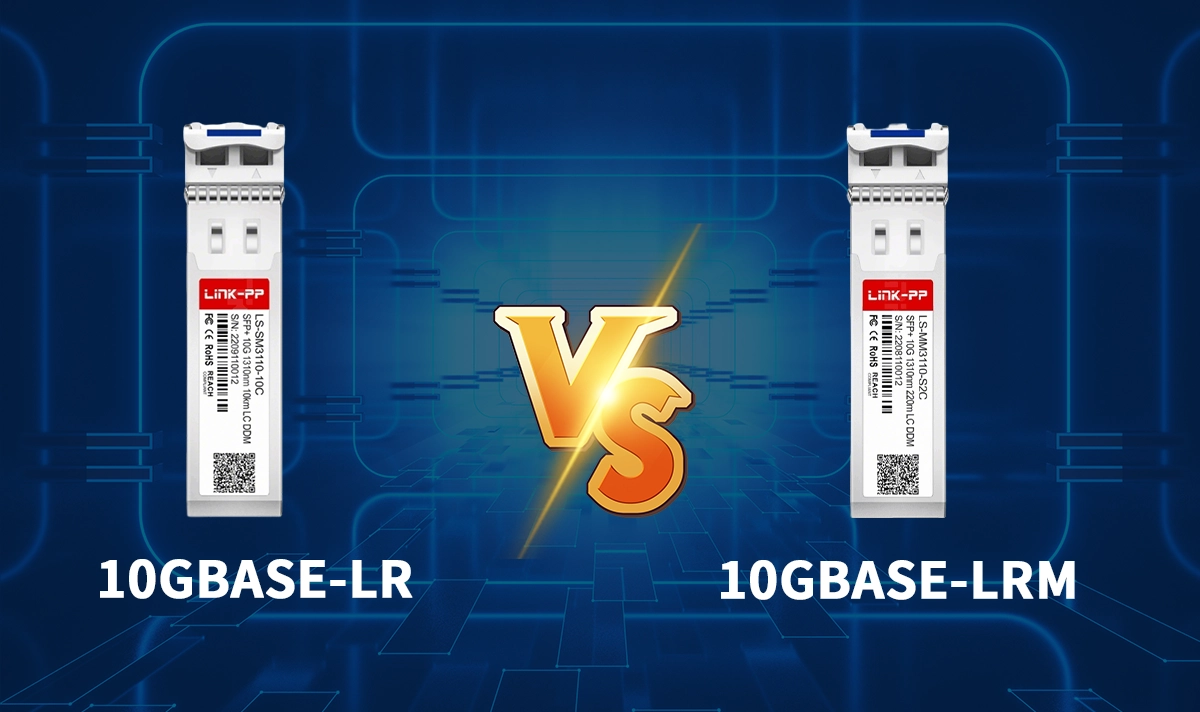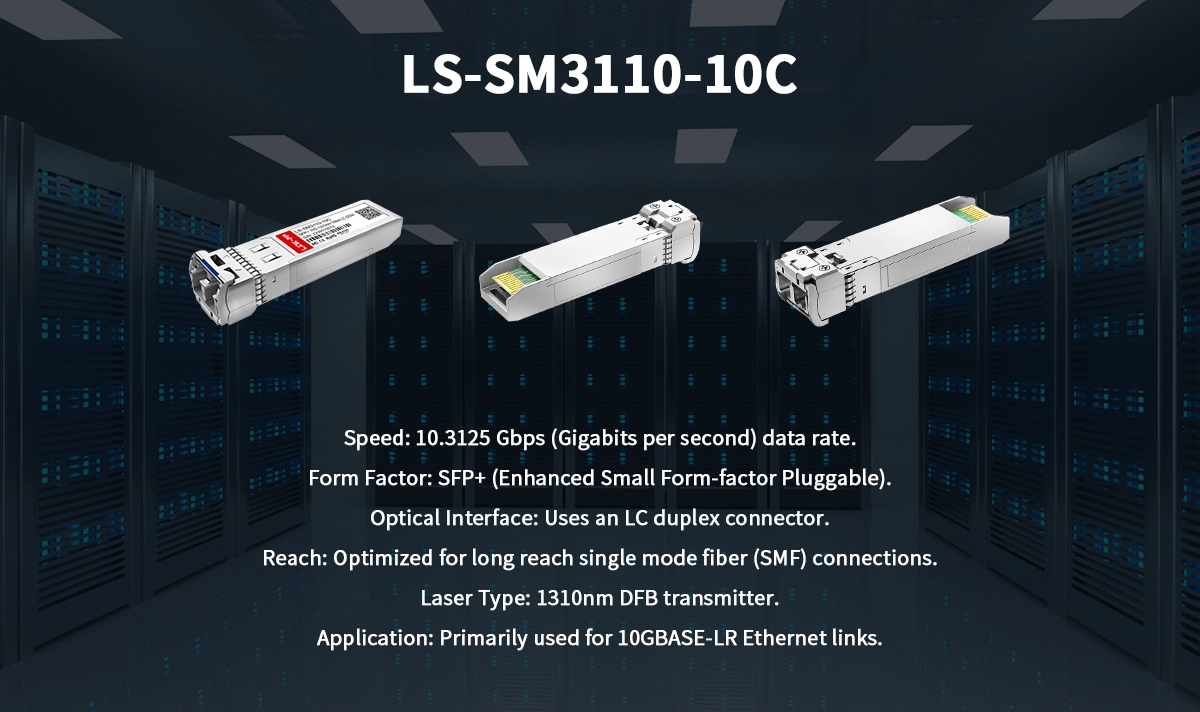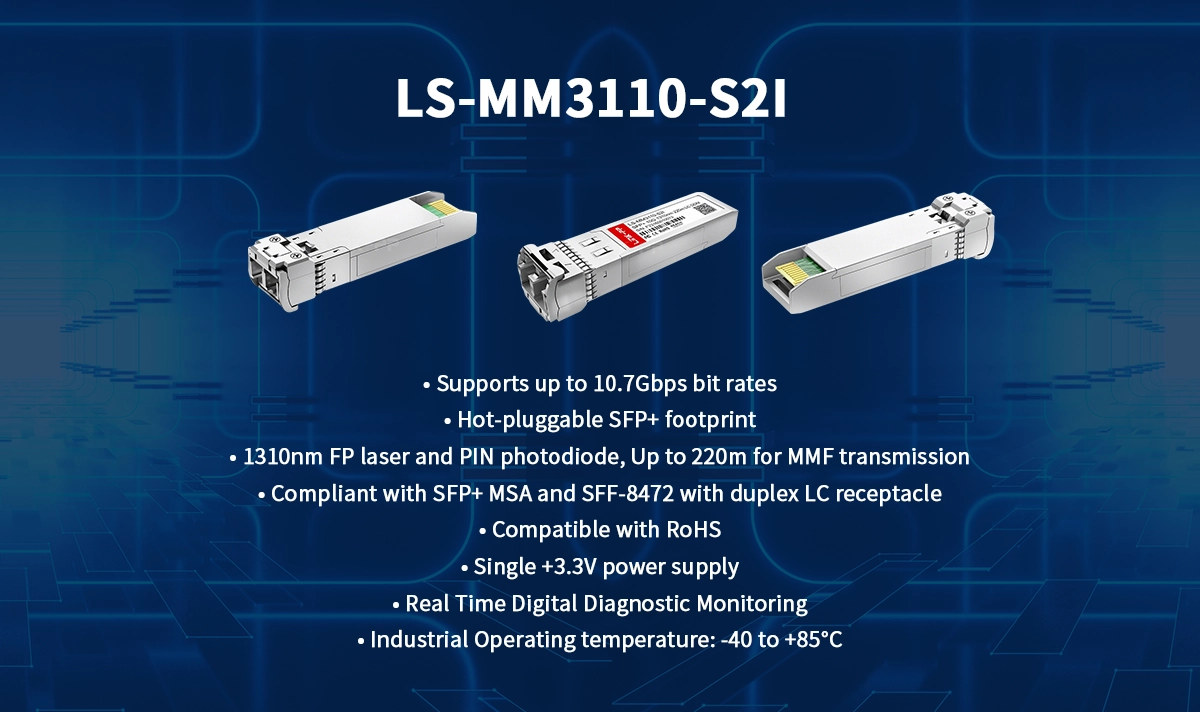
1. Introduction
As networks evolve to meet growing bandwidth demands, 10G Optical Transceivers have become a standard choice in data centers, enterprise backbones, and telecom environments. Among the different variants, 10GBASE-LR and 10GBASE-LRM both support 10 Gigabit Ethernet, they differ in fiber type, transmission distance, and typical applications. Understanding these distinctions helps network engineers make informed deployment decisions.
2. What is SFP-10G-LR?

10GBASE-LR (Long Reach) is designed for single-mode fiber (SMF) and supports transmission distances up to 10 km at a wavelength of 1310 nm. It is the go-to solution for long-distance connections, such as data center interconnects, metro Ethernet, and enterprise backbone links.
🔹 Key Features:
Fiber Type: Single-mode fiber (SMF)
Wavelength: 1310 nm
Distance: Up to 10 km
Use Cases: Long-haul data center links, telecom backbones, enterprise core
3. What is SFP-10G-LRM?

10GBASE-LRM (Multimode) is optimized for multimode fiber (MMF) and supports up to 220 meters over OM1/OM2 and longer reach (up to 300m) over OM3/OM4 fibers. Operating at a wavelength of 1310 nm, LRM modules extend the usability of existing multimode cabling in legacy networks, making them cost-effective for campus or enterprise upgrades.
🔹 Key Features:
Fiber Type: Multimode fiber (OM1/OM2/OM3/OM4)
Wavelength: 1310 nm
Distance: 220m (OM1/OM2), up to 300m (OM3/OM4)
Use Cases: Campus networks, enterprise LAN upgrades, legacy fiber environments
4. 10GBASE-LR vs. 10GBASE-LRM: Side-by-Side Comparison
Feature | 10GBASE-LR | 10GBASE-LRM |
|---|---|---|
Fiber Type | Single-mode fiber (SMF) | Multimode fiber (MMF) |
Wavelength | 1310 nm | 1310 nm |
Typical Reach | Up to 10 km | 220m (OM1/OM2), 300m (OM3/OM4) |
Application | Long-distance data center & metro | Enterprise, campus, legacy fiber |
Cost Efficiency | Higher (long-distance optics) | More economical for short links |
5. Choosing the Right Module
Select 10GBASE-LR if you need long-haul connections across data centers or backbone networks using single-mode fiber.
Choose 10GBASE-LRM if you want to reuse existing multimode fiber infrastructure for short to medium-distance links in enterprise or campus environments.
Both standards are part of the IEEE 802.3ae specification, ensuring interoperability across vendors.
LINK-PP 10G SFP+ Solutions
LINK-PP offers high-quality SFP+ optical transceivers for both LR and LRM applications.
LINK-PP SFP-10G-LR Transceiver – Designed for long-distance SMF connectivity up to 10 km.
LINK-PP SFP-10G-LRM Transceiver – Ideal for multimode fiber environments, supporting up to 300m over OM3/OM4.
These modules are engineered for compatibility, reliability, and cost-effectiveness, making them suitable for data centers, enterprise networks, and service providers.
6. Conclusion
While both 10GBASE-LR and 10GBASE-LRM support 10 Gigabit Ethernet, they serve different roles. LR is best for long-distance SMF links, while LRM provides a cost-effective option for shorter MMF deployments. Network designers should evaluate their fiber infrastructure and application needs before choosing the right module.




